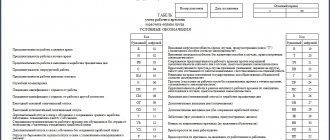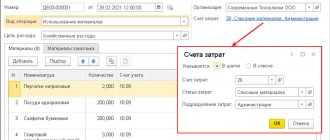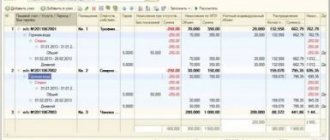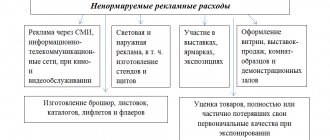The activities of any company are based on the use of material assets and production resources. And all these objects often await a period of their operation in warehouses. A special person in charge (most often a storekeeper) is responsible for their safety on site. But what happens after the designated goods are sent directly to their intended destination - they deteriorate, triple, or lose value for some objective reasons. And sometimes they are completely absent, although they are listed according to documents. To find out, just read our current review. We will analyze the methods, methods, and basis for writing off materials and inventories in accounting, why this procedure needs to be performed, and to which account everything should be written off. We will also look at the process itself in step-by-step instructions.
Techniques
The regulations for accounting of inventories approved by the Ministry of Finance introduce strict procedures that are generally followed. More precisely, these are three options, respectively, the same number of ways to get rid of the entries made in the documentation.
Values can be calculated based on:
- The cost of an individual unit of inventory. And it doesn’t matter in what specific form it is contained. The unit can be chosen arbitrarily, but for convenience it is usually divided into equal parts. By box, by weight (ton, kilogram), by piece products (one set). Thus, the company has the opportunity to eliminate the inventory at the purchase price, the cost of the actual purchase.
- Average cost. Perhaps the most popular method. After all, several groups of different valuables often go into a warehouse at once. And how to write off materials, the regulations for such a procedure with the calculation of each unit is a dubious idea. In fact, one cycle of the production process can require hundreds of different related products: coatings, catalysts, packaging, all kinds of lubricants, while at the same time disposable personal protective equipment, gloves, protective suits, and various equipment used during the procedure are consumed. Calculating the purchase price of each object and, based on this, calculating consumption is like scooping up the sea with a ladle. It is much easier to look at the total price for all lost resources and, based on this, form some kind of average cost.
- FIFO method. Recently it has become increasingly popular. And it should be noted that it is also effective. Although its use remains situational. In fact, the technique allows you to include all costs in the cost calculation. For resources that were purchased at the initial stages of the cycle, processed long ago, removed from the list, as well as for the services provided by third-party companies that were necessary in the production cycle. And the work expended by employees of their own company, based on their wages, which they will receive during the period of participation in the cycle or in a practical way. Many experts are confident that this method is the standard for how to correctly write off materials in accounting and consumables in production. But it cannot be denied that this is a resource-intensive method that wastes a lot of time on the part of those responsible for preparing the documentation.
As a result, we see that each approach has a number of positive and negative aspects. And the organization, guided by its own needs, the number of positions of various resources spent during work, as well as the desired type of reporting, must decide which methodology will be more profitable in the current conditions. But at the same time, no one bothers you to combine several options at different stages. The main thing is to clearly understand when exactly to use this or that technique.
Disposal of expired products
The laws of the Russian Federation prohibit the sale of expired products in order to preserve the life and health of consumers. If such goods are discovered, the company is obliged to conduct an inventory, remove the products from the warehouse and dispose of them. Is it possible to take into account the cost of disposed goods and the costs of their disposal as expenses that reduce income tax and how does writing off goods affect profit? Does the company need to restore VAT that was previously accepted for deduction? The expenses incurred by the organization in order to generate income are taken into account when calculating income tax. How does a write-off affect profits? In essence, of course, disposal is not such an expense item, but the product was produced for the purpose of sale with subsequent profit. And it was disposed of, because otherwise the Law of the Russian Federation is unacceptable. Hence the conclusion that this type of expense can be classified as expenses that reduce income tax. But the costs of disposal itself do not in any way affect the company’s income generation, therefore they are not considered expenses that will reduce income tax. Therefore, it will not be possible to write off materials as expenses instead of work. An income tax audit by inspectors will result in additional assessments and a fine for the organization. As for VAT: the closed list of the Tax Code does not indicate the case of disposal of finished products with an expired sale date as a basis for VAT restoration. Income tax is reduced by writing off the cost of recycled products; VAT cannot be restored, and disposal costs are not accepted to reduce the tax base.
Rules for writing off materials in accounting with industry nuances
The Russian Federation has a huge number of enterprises from small businesses to large holdings. And a significant number of production and non-production areas. It is noteworthy that virtually every industry has its own small nuances that slightly change the general procedure. This means that the exclusion of objects from the list will be stored on the basis of different principles. Now we will focus on this aspect. But it is worth understanding that there are thousands of spheres in the country. Therefore, in our review we clearly do not need to divide them into the narrowest parts and go into deep specialization. We will go through the most broad and in-demand areas. Let's figure out how to properly write off materials in various industries.
Construction
The main nuance is considered to be the fact that a significant number of different resources are involved in the processes. Such as sand, cement, gravel, brick, cinder block, aerated concrete, crushed stone. The list goes on for a long time. As a result, accurate accounting must be maintained at all times. After all, calculations are not carried out on a monthly cycle. This means that you will have to take inventory. And based on the identified expenses, exclude resources from the general list in connection with the number of units spent (cubic meters, kilograms, tons, pieces).
There is one more aspect that distinguishes this type of write-off of materials in accounting and tax accounting, paperwork. You will need an unexpectedly large package of papers. More specifically:
- Comparison of the specified standard resource consumption and the actual one. And in the vast majority of cases there will be a difference.
- Estimates. There are two types of techniques used. The first is by event or its duration. And the second - specifically for the object, after its delivery to the customer or contractor.
- Reports from local responsible persons. Often this means documents submitted by foremen or a single package that is compiled by the head of the entire site, based on cumulative reports.
- Standards set by management at the facility. That is, a certain resource consumption that is regulated on the site.
- Object logs.
The list, as you can see, is quite massive. And this is perhaps the central feature of the entire sphere. Indeed, during construction, when consumable resources are often simply piled up on the site (sand, crushed stone), it is very important to conduct a complete analysis of product care. Otherwise, uncontrollable shortages will constantly appear.
Agriculture
There are also plenty of documentary reports in this area. Among them:
- Act of consumption of planting seeds.
- Feed list.
- Livestock disposal act.
And what’s noteworthy is that in the industry, for every unaccounted item, an exact justification is required. If an animal died, then it is necessary to understand the reasons, and if it was a disease, then an accurate diagnosis should be made, a veterinarian should be involved, and the threat of an epidemic should be analyzed. If this is some kind of injury, it is required to give a clear definition under what circumstances it was received. Determining the presence of the culprit. When this is an oversight of an employee, or his negligent attitude, then the expense is indicated in the form of debt of a particular employee or deduction of his bonuses and wages. That is, how materials are written off in accounting in the agricultural sector is a complex issue. And it is entirely based on rational spending.
Transfer of workwear into operation
First stage: formation of the document “Decommissioning of materials”:
- open the “Warehouse” menu (1);
- Click on the inscription “Transfer of materials for operation” (2).
The corresponding form will be displayed:
you need to click on the inscription “Create” (3), after which a form to fill out will be displayed:
In the header of the document you need to fill in the following information (4):
- organization;
- date of transfer;
- stock;
Second stage: to write off workwear, you need to fill out the fields on the tab of the same name:
In the tabular section, select an element from the “Nomenclature” directory - select workwear and fill in the following fields (5):
- quantity;
- the individual to whom the clothes are transferred;
- method of displaying expenses and accounting account.
To view the accounting entries generated after posting the document, click on the “DT/CT” button (6), (7).
In the example of our operation, it will be seen that from account 10.09 “Special clothing in use” the transfer of special clothing to the employee and the writing off of its cost as expenses is reflected in the debit of account 26 “General business expenses”.
Special account MTs.02 entitled “Working clothing in use in the program is intended to keep records of material for each employee who received special clothing. In the event that this clothing becomes unusable, it is written off from the same account through the document “Write-off of materials from use” (8).
Ready-made solutions for all areas
Stores
Mobility, accuracy and speed of counting goods on the sales floor and in the warehouse will allow you not to lose days of sales during inventory and when receiving goods.
To learn more
Warehouses
Speed up your warehouse employees' work with mobile automation. Eliminate errors in receiving, shipping, inventory and movement of goods forever.
To learn more
Marking
Mandatory labeling of goods is an opportunity for each organization to 100% exclude the acceptance of counterfeit goods into its warehouse and track the supply chain from the manufacturer.
To learn more
E-commerce
Speed, accuracy of acceptance and shipment of goods in the warehouse is the cornerstone in the E-commerce business. Start using modern, more efficient mobile tools.
To learn more
Institutions
Increase the accuracy of accounting for the organization’s property, the level of control over the safety and movement of each item. Mobile accounting will reduce the likelihood of theft and natural losses.
To learn more
Production
Increase the efficiency of your manufacturing enterprise by introducing mobile automation for inventory accounting.
To learn more
RFID
The first ready-made solution in Russia for tracking goods using RFID tags at each stage of the supply chain.
To learn more
EGAIS
Eliminate errors in comparing and reading excise duty stamps for alcoholic beverages using mobile accounting tools.
To learn more
Certification for partners
Obtaining certified Cleverence partner status will allow your company to reach a new level of problem solving at your clients’ enterprises.
To learn more
Inventory
Use modern mobile tools to carry out product inventory. Increase the speed and accuracy of your business process.
To learn more
Mobile automation
Use modern mobile tools to account for goods and fixed assets in your enterprise. Completely abandon accounting “on paper”.
Learn more Show all automation solutions
Valuation of unusable resources
Of course, such a situation is not at all uncommon. In no production facility is there a 100% guarantee that human errors or machine malfunctions will not lead to waste. And here two factors become important. The first is whether a particular employee or group of employees was to blame for such a result. And also whether the indicated loss falls within the normal limit or is already beyond it.
If all losses are within acceptable limits, then even if someone is at fault, the account will be production. But it will become personal if the guilt of the employees is obvious, and the expense has gone beyond the regulated norm.
Natural loss and excess technological losses
Technologists at the enterprise develop technologies for processing materials and monitor compliance with technological standards approved at the enterprise. It is important to distinguish between the concepts of technological losses and natural loss. If, when losses occur, the physicochemical properties of the material are preserved, then these are technological losses; if they change, this is a natural loss. Irreversible losses that an enterprise has incurred due to natural loss should not exceed the indicators approved by the Government of the Russian Federation. Where can I get the norms of natural loss? For this purpose, the Government of the Russian Federation has approved special reference books, which indicate all the indicators valid for each industry. For example, when drying wood in a drying chamber, the manufacturer sets the rate of drying of the board, which is then used at the production site. Shrinkage is a natural loss, since during the drying process of wood in the drying chamber, water evaporates. However, during the next delivery of raw boards, the supplier made a mistake with the thickness of the blanks, and the percentage of shrinkage increased compared to the approved norm, which led to additional costs, since the yield of dry boards was less. We are talking about natural loss above the norm. Natural loss in excess of the norm is an enterprise expense, but is not written off as expenses that reduce income tax. But the manufacturer can take into account excess technological losses, which arise in addition to the standard technology costs, when taking into account the costs of production. For example, the remains of concrete on the walls of a concrete mixer are technological losses. And they could have turned out beyond the norm due to the use of low-quality cement when preparing the solution. The Russian Ministry of Finance does not advise writing off such excess losses as expenses, since writing off materials affects income tax - it increases these same expenses and reduces the tax base. After all, the manufacturer himself set the raw material consumption standards, and in such situations he exceeds his own calculations! But, on the other hand, if there is, for example, an act on the fact of an increase in the consumption of raw materials above the norm and justification for the legality of writing off such an additional expense, the enterprise can prove its case in court if the tax authorities consider such a write-off to be unlawful. Income tax is reduced by writing off the amount of excess technological losses, and natural loss in excess of the norm is not accepted to reduce the tax base.
How materials are written off in accounting, drawing up an order and a sample
The first stage of the procedure is the order. It is authorized to be issued by the director, manager, or the person replacing him and acting. The first point of the order is the creation of a commission. In principle, we understand that the main task will be to identify shortcomings. This means that an inventory will be needed. It is clear that even for a routine inspection it is always necessary to appoint a full commission. Where there will be both representatives of the accounting department and responsible persons, for example, a storekeeper or someone who receives products and is personally responsible for its safety.
The question often arises of how to write off consumables in production that are not available, and whether it is possible to immediately proceed to document processing. That’s the simple answer; in fact, this procedure should always be preceded by an inventory. And the initiative that appears in the form of an order has a standard or atypical version. The first option is when the work regulations are already assigned in advance in the form of a separate document. And the second - in cases where the order itself contains the entire regulation. This is an inconvenient form, so often everyone uses the first one.
To make the process of inventory, checks, and exclusion of a resource from the list of available ones easier, you will need software of the appropriate level. And the Cleverence software can help with this issue. This:
- Simplifying the inventory procedure, you only need one smartphone.
- Combining reporting, write-offs and inventory itself into a single system, which is again controlled from one device. Significant savings of time and effort.
- The ability to install both packaged software and individual software developed specifically for the needs and specifics of a particular company.
- Mobile applications that integrate into the general reporting system, for example, Bitrix.
- Solutions in accordance with all the latest amendments to Russian legislation.
- Current support. If the law changes, applications immediately adapt to it through updates.
Now let's figure out what should always be in a standard order. Without which points it simply will not be such:
- Full name of the enterprise.
- Date and serial number of a specific order.
- The purpose of the enterprise.
- Composition of the commission.
- Manager's signature.
The procedure for writing off materials
To write off material assets, the creation of a special commission is required. It consists of financially responsible persons, as a rule, from different structural divisions of the enterprise. It is their responsibility to identify and examine damage, defects or malfunctions of equipment, machinery, furniture, household equipment, tools and other valuables contained on the organization’s balance sheet.
After recording such facts, they are authorized to draw up an act of write-off of materials. As a rule, in large organizations there are specially developed clear instructions for such actions.
To write off materials, there must be compelling reasons with documentary evidence.
Write-off of materials cannot occur without compelling reasons, confirmed by a certain evidence base. In particular, during the procedure for writing off materials, supporting documents can be used.
So this is:
- reports on products produced over a certain period (its volume, names, etc.);
- reports from financially responsible persons on the material assets used;
- written documents on the consumption of materials in excess of established standards (with justification for these facts);
- approved calculation according to material cost standards for the manufacture of a unit of goods;
- other financial and accounting documents.
Before writing off material assets, the enterprise must conduct an inventory of property and enter its results into the relevant documents.
The procedure for decommissioning materials, postings and documents
This procedure is a rigorous process. Order, inspection, reporting. And the last point often raises a lot of questions. And in vain, because this is a common operation with its own nuances.
The first of them is that the set of inventories is credited, that is, 10. In all cases, no matter what part of the operation is involved. But expense accounts are debited by their number.
We get this form:
| Debit part | Credit part (always identical number) | Explanations |
| 20 | 10 | Cost write-off in favor of main production |
| 23 | 10 | Analysis and assessment of resource for auxiliary production processes |
| 94 | 10 | Write-off in case of loss. This includes damage, theft, exceeding the service life, initial defects, breakdown during the production process and similar |
| 99 | 10 | This category includes resources damaged by natural disasters. |
| 91.2 | 10 | All products that were sold under a gratuitous contract. That is, often gifts are for marketing purposes or as a result of charity events |
Loss of materials due to emergency
Tax authorities recognize floods, hurricanes and other natural disasters that occurred through no human fault as an emergency or accident. If, as a result of an emergency, materials belonging to the organization were completely or partially destroyed, it has the right to write off losses as an expense item that reduces profit. Since the write-off of materials affects income tax, to prove to the tax authorities that the write-off was legal, the company’s accountant is required to submit a certificate from a service that is authorized to record such incidents (for example, the meteorological service or the Ministry of Emergency Situations) to confirm the fact of the emergency. Next, a commission created in the organization conducts an inventory and records the losses caused by the disaster, which are then written off. And if the damage is caused by a broken water pipe, how can you write off the materials at a loss? The organization will not write off such losses in the full cost of the loss as expenses that reduce the tax base, since the damage was caused to the enterprise due to the dishonest performance of official duties by the Company’s employees. Write-off as income tax expenses of losses (pipe breakage, for example) incurred by an organization in connection with utility accidents is formalized in parts: only losses within the limits of natural loss norms can be included in the tax base; the rest of the damage can be compensated by the organization at the expense of the person determined by the culprit persons in emergency situations. A significant factor for the inspector to recognize the losses as legitimate will be how to confirm the write-off of materials during flooding. For income tax purposes, confirmation of the fact of the accident will be required, and these are: a certificate from the management company servicing the building in which the accident occurred, as well as certificates from the services that eliminated the accident (for example, the medical service). It is important to take an inventory of the affected materials and document the damage. Income taxes are reduced by writing off the value of materials destroyed as a result of natural disasters. Expenses in excess of the norms of natural loss caused to the owner of materials as a result of utility accidents are not accepted to reduce the tax base.
With proper paperwork, you can reduce income tax by writing off materials, inventory, and finished products that can no longer be used by the owner to generate income.
Act of write-off of inventories
This is the only way to exclude inventories from the list of active ones when stored in warehouses. It is noteworthy that since 2015, this, in principle, allows the use of any calculation and analysis option: by piece cost or by total cost. In this case, a document is always drawn up in form 0504230.
It consists of two parts. The header contains basic information, order number, date, composition of the commission, full name. leader. The main part, in the form of a table, provides information on the actual loss of inventories. Contains graphs of expenses expected according to the norm, the reasons for such an outcome. In fact, this act is the only legal way to properly write off materials from the warehouse.
What to do if there is a balance
In principle, it is permissible to create a separate sub-account where all excesses are indicated. But this is an optional procedure. Just a way to make your work easier and make your accounting more transparent. But the aspect has nothing to do with the issue under discussion. Since it is strictly prohibited to enter this information into act 0504230, even with reverse values.
Ready-made solutions for all areas
Stores
Mobility, accuracy and speed of counting goods on the sales floor and in the warehouse will allow you not to lose days of sales during inventory and when receiving goods.
To learn more
Warehouses
Speed up your warehouse employees' work with mobile automation. Eliminate errors in receiving, shipping, inventory and movement of goods forever.
To learn more
Marking
Mandatory labeling of goods is an opportunity for each organization to 100% exclude the acceptance of counterfeit goods into its warehouse and track the supply chain from the manufacturer.
To learn more
E-commerce
Speed, accuracy of acceptance and shipment of goods in the warehouse is the cornerstone in the E-commerce business. Start using modern, more efficient mobile tools.
To learn more
Institutions
Increase the accuracy of accounting for the organization’s property, the level of control over the safety and movement of each item. Mobile accounting will reduce the likelihood of theft and natural losses.
To learn more
Production
Increase the efficiency of your manufacturing enterprise by introducing mobile automation for inventory accounting.
To learn more
RFID
The first ready-made solution in Russia for tracking goods using RFID tags at each stage of the supply chain.
To learn more
EGAIS
Eliminate errors in comparing and reading excise duty stamps for alcoholic beverages using mobile accounting tools.
To learn more
Certification for partners
Obtaining certified Cleverence partner status will allow your company to reach a new level of problem solving at your clients’ enterprises.
To learn more
Inventory
Use modern mobile tools to carry out product inventory. Increase the speed and accuracy of your business process.
To learn more
Mobile automation
Use modern mobile tools to account for goods and fixed assets in your enterprise. Completely abandon accounting “on paper”.
Learn more Show all automation solutions
Let's sum it up
In fact, the write-off of inventory and materials in tax accounting and accounting has no differences.
If we are talking about white accounting, which does not try to mislead the competent authorities. And it is worth remembering that although the law does not put forward actual rules on the procedure, and a lot remains at the discretion of the manager, the final reporting will be significant documents for the Federal Tax Service. Which they can check at any time. Therefore, it is worth approaching the procedure with full responsibility. At the same time, it is also undesirable to refuse such events or minimize them. Otherwise, accounting will turn into a tangled mess, and expenses will “mysteriously” increase. Number of impressions: 12553
Disposal of packaging with a logo
To ensure the safety of goods during transportation and the convenience of storing and unloading, the manufacturer uses containers. These can be disposable and reusable boxes, pallets, bottles, containers, etc. When concluding an agreement, the parties agree on the terms and conditions for the return of reusable containers. If the container is non-returnable under the terms of the contract, then the manufacturer writes it off in full as expenses, reducing income tax. What if, for advertising purposes, the manufacturer used images or advertising inscriptions on the container? Are such expenses considered expenses for advertising purposes, and should they be rationed? It all depends on the subjective opinion of the tax authority representative. The manufacturer may decide to completely write off the cost of manufacturing such containers as expenses, if necessary, challenging the tax authorities’ decision to introduce rationing in court. Income tax is reduced by writing off the cost of packaging with the Company logo, taking into account the rationing of expenses for advertising purposes.







